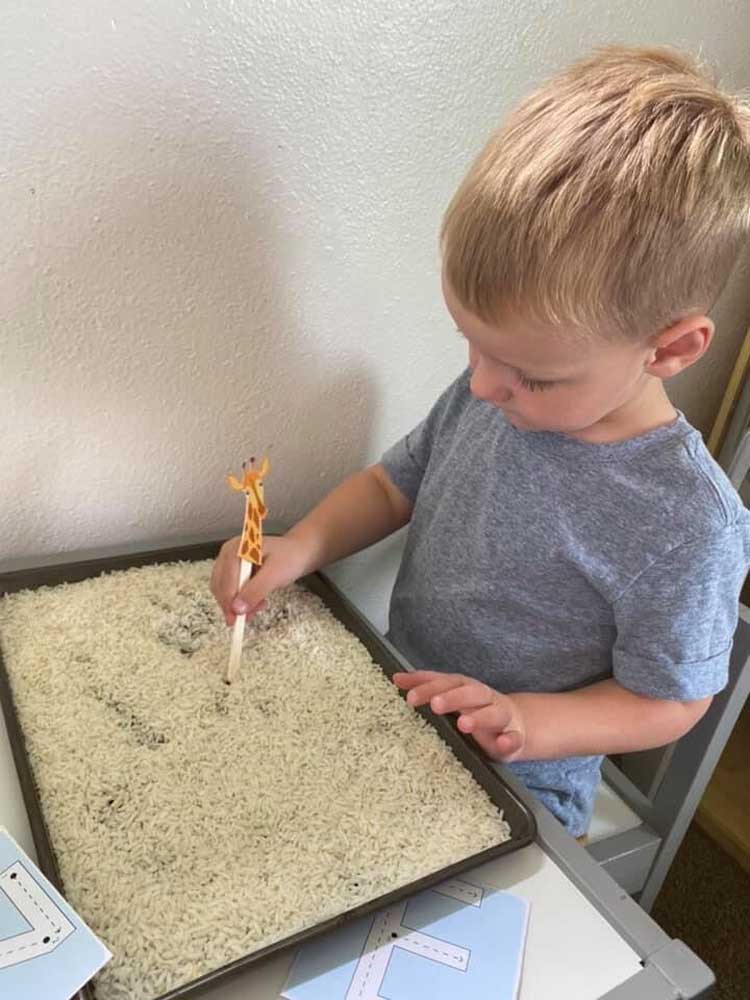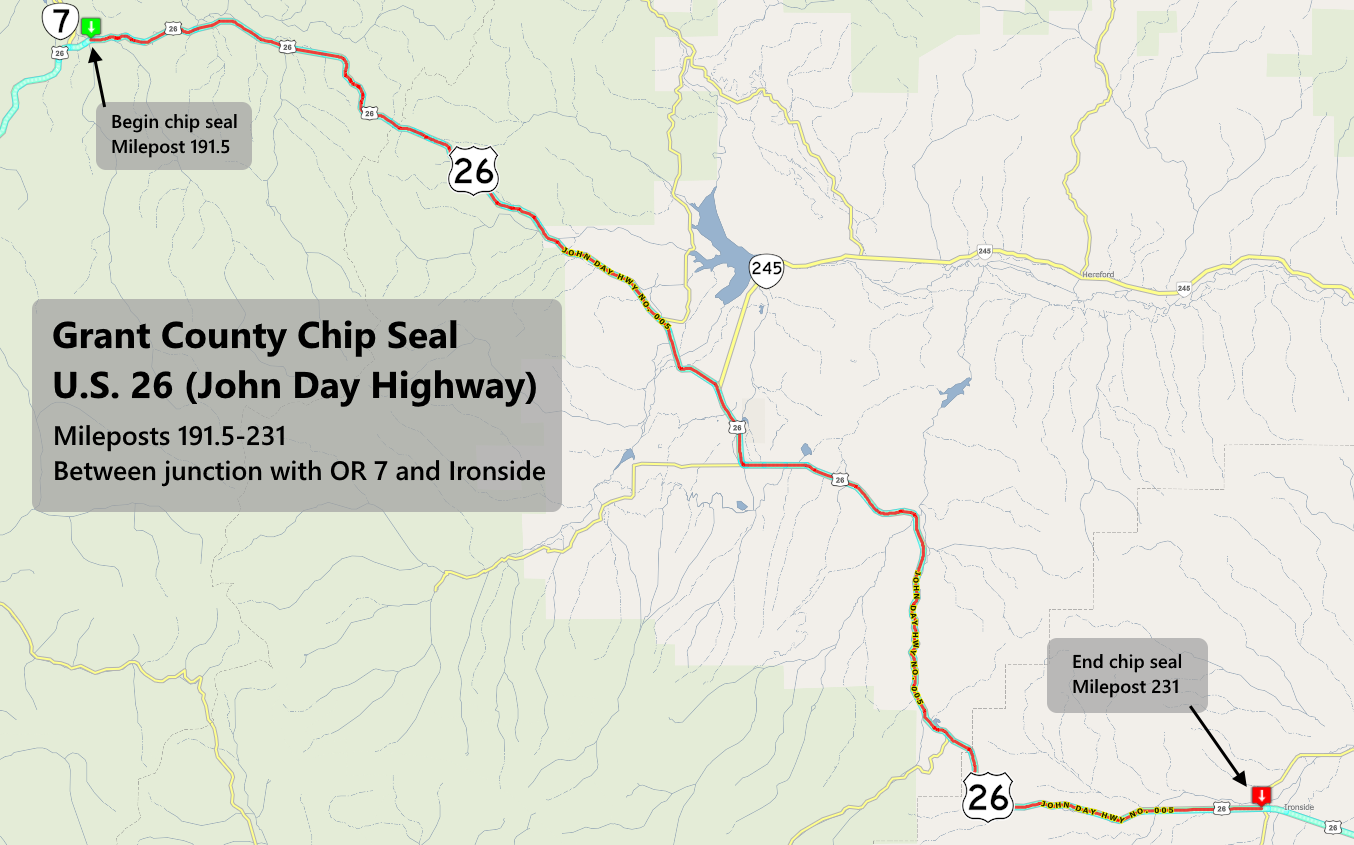Who’s watching the kids? Child care shortage impacts Grant County
Published 9:15 am Tuesday, November 9, 2021

- A child plays at the Growing Tree day care center in John Day.
The phone calls do not get any easier for Josie Thomas, owner of the Growing Tree day care center in John Day.
On the other end of the line are frustrated parents with one or more young children who have been unable to find child care and are likely considering one of two options: leaving their job to stay home with their child or leaving Grant County altogether.
“They’ll be on the wait list for an infant spot,” Thomas said, “and by the time we have room for them, their child’s a toddler.”
Grant County’s child care shortage is not new. However, an April report out of Oregon State University underscores the scope of the issue.
According to the study’s authors, all 36 counties in Oregon are considered child care deserts because of the limited number of day care spaces.
A child care desert is a region with more than three children for every slot in a child care program, including family child care homes and commercial day care centers.
According to the study, Grant County ranks 35th out of Oregon’s 36 counties for access to infant and toddler care.
Thomas, who watches infants and toddlers, told the Eagle that as of Friday, Nov. 5, she had four people on her waiting list, but it got as high as 10 over the summer.
People can be on the wait list for an extended period, Thomas said, and she receives calls daily from parents desperate to find care. As a mother with another child on the way, she empathizes with their situation.
“It’s so hard telling them we just don’t have room,” Thomas said.
Jordan Bass is a Forest Service employee who also coaches Prairie City High School’s volleyball team. She told the Eagle that she and her husband, a mechanic and wildland firefighter, have yet to find the part-time child care they need for their 20-month-old son.
Bass said she had a college student coming in two days a week to babysit, but that arrangement ended when the student returned to school. Since then she’s been seeking a replacement through word of mouth and asking other parents.
In the meantime, she said, she and her husband have adjusted their work schedules so that one of them can stay home with their son. Not having access to child care, Bass said, has hurt the family economically, forcing her husband to turn down some fire assignments that pay well but would take him away from home for extended periods of time.
Bass said in a Nov.9 email that she thought a local in-home childcare situation but that has since fallen through.
High costs
Even when child care is available, the cost can be prohibitive for many working families.
Sarah Ake, a server at 1188 Brewing Co., has five kids with her fiancé. Most of the couple’s children are in school now, with the youngest being looked after by a relative, so child care is no longer an issue. However, cost has been a major barrier in the past.
A few years back, when Ake was working on a post-secondary degree, she had to travel outside the county for two days to take a test. She only needed care for one child, but she had to pay $70 per day for five days. Ake said one-week minimums are a common practice of many day care centers, which typically don’t offer drop-in care.
In a 2018 study, the Oregon Department of Education’s Early Learning Division reported that costs for all types of child care had increased across the state over the past decade. The price spike was particularly acute for very young children, with the costs doubling for toddlers in home-based child care facilities and for both infants and toddlers at commercial day care centers.
The OSU study reported similar findings. While family incomes have largely remained stagnant over the past 10 years, the study found, the cost of child care has consistently outpaced inflation.
Just how much money are we talking about? The OSU researchers estimated the cost of infant-toddler care for one child in Oregon averages more than $14,000 a year.
Meanwhile, the U.S. Census Bureau reports Grant County’s average annual salary is roughly $45,000, approximately $10,000 below the statewide average.
A broken market
Labor is the biggest expense for child care centers because of the number of providers needed, according to a study from the Center for American Progress.
For infants and toddlers, according to Katrina Randleas, a nonprofit parent resource center in John Day, the state standard is one provider for every four children.
“That either drives up the cost to make it impossible for parents to afford or drives down your income ability as a child care provider,” Randleas said.
The OSU study points out that in addition to licensing and compliance costs, the cost of living is another aspect that adds to the challenges with home-based child care centers.
Jessica Mayer runs a license-exempt child care business in Canyon City. Under state rules, she can only watch three children at a time who are not her own. She’s working toward getting her license so she can take in more children and make the operation more cost-effective.
Mayer said now is a great time to open a day care center because the state is making grant funding available in an effort to alleviate the shortage of child care.
Even so, the economics of child care remain a problem.
While labor costs mean razor-thin margins for day care center owners, child care providers are stuck with low pay: The median wage in Oregon is just a little over $12 per hour.
Randleas said that needs to change. If child care providers earned salaries and benefits on a par with public school teachers, she said, the availability of care would increase markedly and the quality of care would improve, creating beneficial ripple effects for society.
“I would love to see the early childhood providers treated as the professionals that we want them and need them to be,” Randleas said.
Preschool
If there is a bright spot in Grant County’s child care picture, it’s preschool. Randleas said most child care slots in the community are for kids in the 3-to-5 age range.
Prairie City and Long Creek are both in the second year of funding from Preschool Promise, a state grant program that focuses on making early education available to all children living at or below 200 percent of the poverty level.
The state awarded Prairie City 15 preschool slots and nine in Long Creek, according to Patti Wright, a coordinator with Frontier Early Learning Hub, which administers the Preschool Promise program in Grant and Harney counties.
Wright said Dayville and Monument also applied but were not chosen. However, the Early Learning Hub will help the districts apply for the second round of funding later this month.
The Preschool Promise programs in Grant County are all quality preschools, Wright said. Whether the preschool is private, public, in a school district or Head Start, they all work toward kindergarten readiness and building social and emotional skills for children ages 3 to 5.
In October, Prairie City filled all 15 preschool slots and had one child, 4, on a wait list. Long Creek filled one slot while the others were awaiting documentation, according to Wright.
And there are other preschool options in the area that are not covered by the Preschool Promise umbrella.
According to the most recent data compiled by Frontier Early learning Hub, Dayville has 10 children enrolled in preschool and Seneca has three.
John Day Head Start, located at the Oregon State University Extension Service office, has 15 slots filled and one child on the wait list. Bright Beginnings, a private preschool in John Day, has 10 slots filled, and Sonshine Christian School has 32 preschoolers enrolled with one on the waiting list.
Employer perspective
The shortage of care providers for young children in Grant County doesn’t just hurt working families. It also impacts the economy.
Var Rigby, director of human resources at Blue Mountain Hospital, said that while he cannot give a specific number, job offers have declined and the hospital has lost valuable employees.
Rigby said some employees in his department have been forced to stay home because their regular child care provider is unavailable and there’s no alternate care to be found.
He said these situations often happen with no advance notice due to sickness, personal emergencies and COVID-19 quarantines.
“But even when the child care provider has a planned notice, there are simply no alternative arrangements available for them to find care,” Rigby said.
Bill Wylie, operations manager with Chester’s Thriftway, said when he lost staff to quarantine, he had employees who could not work additional hours because of a lack of child care.
Long-term outlook
Randleas said there are “broad-spectrum impacts” that come with the realities of a child care desert.
“We have parents who are trying to work,” Randleas said. “And how do you work if you can’t find reliable, affordable, enriching child care?”
A lack of available, affordable and accessible child care doesn’t just impact one subset the county’s population, according to Randleas.
“It impacts every group,” she said. “Our economy, our health, and long-term outcomes for the families in our communities.”
Last month the state announced an increase in child care subsidies for low-income families in Oregon’s Employment Related Daycare Program thanks to a federal rule change. The change means qualifying families will have a lower co-pay for child care.
Previously, the average co-pay for a family below the federal poverty line, defined as an annual income of $21,960 for a family of three, was $250 a month. Under the new rules, the average co-pay will be just $16 a month. The upper limit for qualifying families with higher income levels will be about $130 a month.
Those interested in receiving state child care benefits can apply online at One.Oregon.Gov or by phone at 800-699-9075.
This story has been updated from the original version to correct the misspelling Jessica Mayer’s last name and add comments from Jordan Bass.






